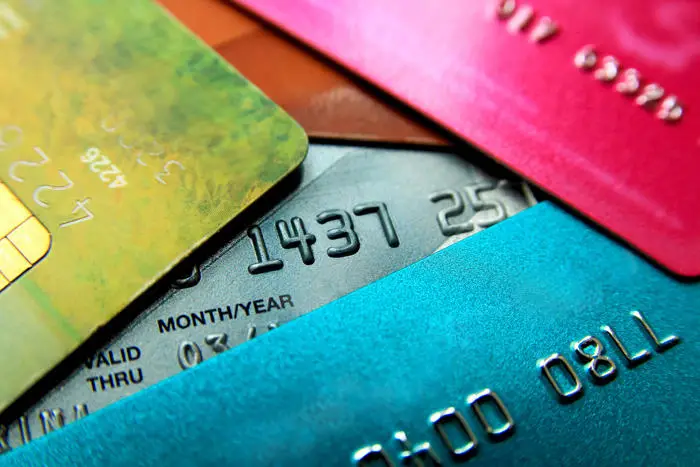
By: Robert Bisewski
robert.bisewski@thinklogicly.com

Can You Spot the Difference?
For decades, the experience of consumer banking was steady, unchanging, and run-of-the-mill. When browsing banking products, there wasn’t much of a contrast in offerings from one institution to the next. Creating and building bank products came at a high cost, and so a bank’s competitive advantage, at times, depended upon the number of branches available to their clients or their cash reward offers for opening particular accounts.
Standard bank offerings:
- checking account/ savings account
- credit card / charge card
- retirement-oriented products, such as a 401k or RRSP
- local no-fee ATMs
Almost every bank or credit union had offered these products to their customers over the last several decades, often with minimal changes or adjustments over the years.
A lack of product innovation in the banking industry has impacted efforts in maintaining customer loyalty. Sure there are a number of consumers who choose to stay at the same bank for years, but on the other side of this are customers who switch banks without remorse at the sight of the next best offer.
One common tactic, from a decade ago, was the offer of a free Apple or Android tablet upon switching away from a rival bank or credit union. Some banks also offered ‘free cash’ incentives if a new client enrolled in three or more services upon switching.
But do these “perks” hold any weight in regards to today’s generation of banking consumers, more specifically, Millennials and Gen Z?
With the Great Wealth Transfer making headlines as of recently, it begs the question: How can banks connect to and attract newer and potentially younger customers?
FinTech to the Rescue…Again
With the introduction of FinTech came recent trends in computer technology. This meant that more can be done online and it’s radically altering what people imagine payment services and systems ought to be.
Alternative options now exist, such as online-only banks, cryptocurrencies, and money handling services like PayPal and Stripe, so traditional banking services are no longer as compelling.
But with more choices, comes more chaos. Consumers can find themselves being swallowed whole in the midst of the marketing mayhem that ensues with the introduction of new banking platforms.
The end goal for a majority, if not all, of banking platforms and branches are to increase customer engagement and to become the long-term home for your direct deposit.
Financial institutions and credit unions can either view the FinTech industry as a disrupter to their businesses or as an ally that is providing more opportunity to understand and build better relationships with their customers.
Credit unions and community banks can find benefit in collaborating with FinTech’s innovations when competing with Big Banks and their over the top marketing efforts.
The question that may be top of mind for most consumers is: Which option will give me the most benefits?
Out with the Old, In with the New
When compared to banks, by contrast, credit cards have evolved much better in these new digitally advanced environments led by FinTech companies. They were some of the first online payment systems, and often came with the ability to pay off the balance via convenient websites. Many offer rewards such as a points system, cash back, or other loyalty programs; which tend to keep people interested and increase continued use.
New developments in this space include the following:
- credit-upgrade cards that offer flexible installment loans
- cards that offer employee paychecks two days early
- environmentally conscious features
- credit card like payment capabilities for those unable to sign up for a traditional credit card
According to the New York Federal Reserve, US household debt has surpassed $16 trillion, credit card balances have increased by $46 billion last quarter and Americans have opened 233 million new credit card accounts during the second quarter. One can safely assume that the credit card industry is thriving, which is why FinTech companies are making their way into this specific market.
‘Credit Invisible…with Accessibility and Choices For All’
Twenty-six million Americans are ‘credit invisible’ and are struggling to get a credit card or bank loan – FinTech wants to change this and their mission is to democratize access to financial services.
Credit invisible candidates are individuals who either don’t have a credit score or can’t access credit at reasonable rates like everyone else; which is a mountainous obstacle that can emerge in modern, cashless societies like today’s.
According to Consumer Financial Protection Bureau, 1 in every 10 adults are credit invisible. Simply put, these consumers do not have a credit history, therefore rendering themselves as invisible to lenders. This can create a stressful situation for those looking to purchase a home, apply for a car loan or credit card.
FinTech’s goal is to present itself as a source of relief to those struggling to obtain a credit card, as mentioned above, and to those who are looking for a more convenient and seamless application process that traditional banks may not offer.
Little Assembly Required, but Read the Fine Print
For credit invisible consumers, they now have options to kick start their credit card journey. FinTech companies like Chime, Varo and Tomo offer low risk and effective ways to build one’s credit history and score. With product options similar to a secured credit card, consumers can open credit cards with automated repayment plans or checking accounts that link to your credit card and establish usage limits.
American Express and other rising financial banking platforms have stepped up to offer cards that allow electronic payments, but nonetheless, still offer the strictness of a non-credit account. There may be no-interest credit options, but don’t skip the fine print that detail possible fee structures.
A rather interesting innovation is a number of Fintech companies offering cards made of wood and are oriented towards the environmentally conscious users by the promise of planting trees as long as customers continue making purchases. A clever and fun way to be eco-friendly!
It is very clear that in the last few years, customers now have a much greater range of options and choices. From traditional banks, credit unions, to fintech companies, and other financial services providers, consumers have a plethora of options at their fingertips. The market is teeming with new players who are pursuing fresh strategies to convince consumers to move away from their monotonous bank or credit card and choosing a path that allows them to make a positive difference to the planet, their community, and to their bottom-line values.
Enjoy reading this article? Other content worth your time:
- Getting paid…in Bitcoin?
- The Future of Machine Learning in FinTech
- The Future is Here: How Thematics is Disrupting Investing
- Beach Bum or Desk Jockey
- Harley Davidson, Sustainability, and ESG
- Women, Millennials, and Financial Planning
- How to Use One of Wall Street’s Best-Kept Secrets
- The Appeal of Thematic Investing
To connect about media inquiries or to discuss the article, please email Robert at: robert.bisewski@thinklogicly.com

